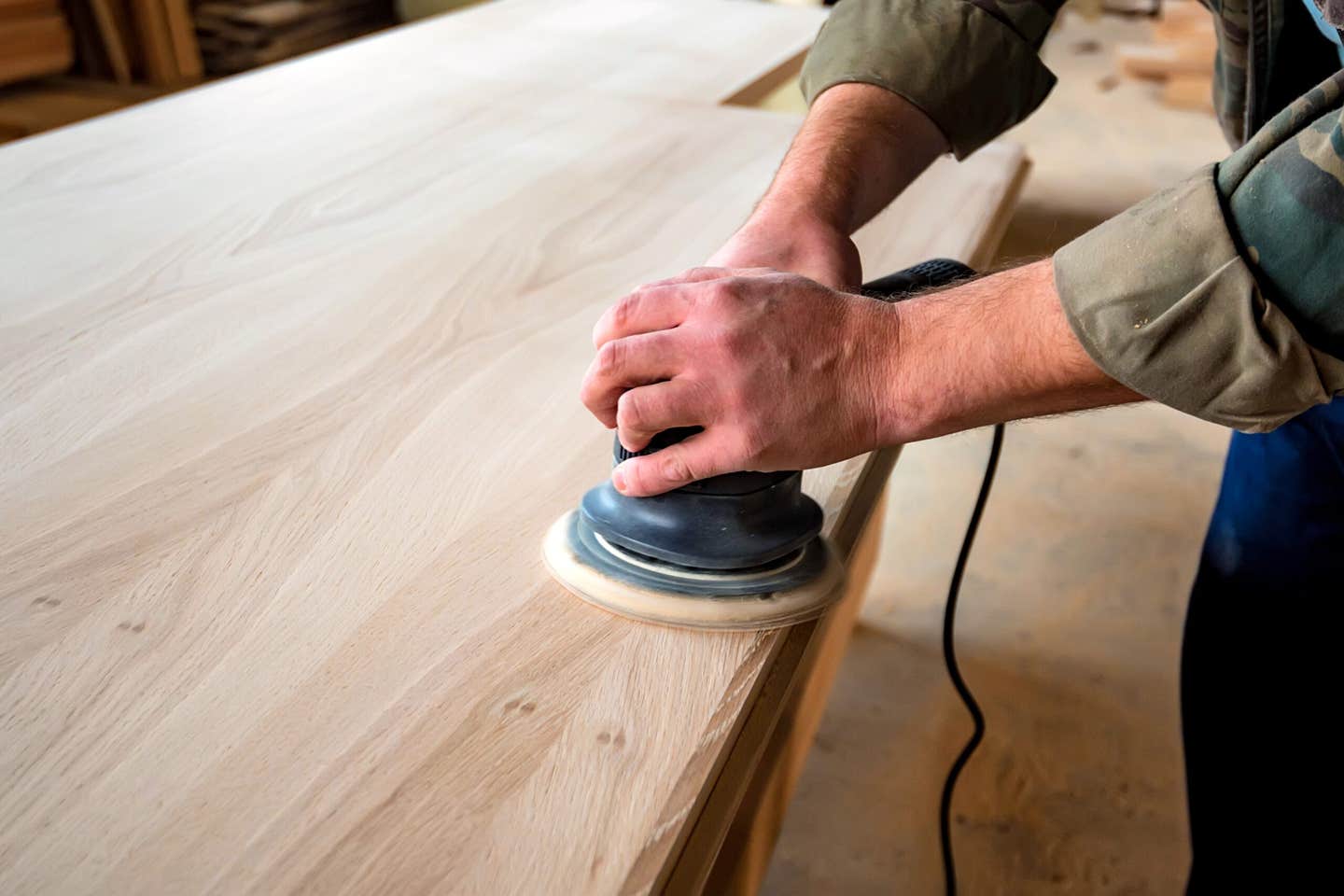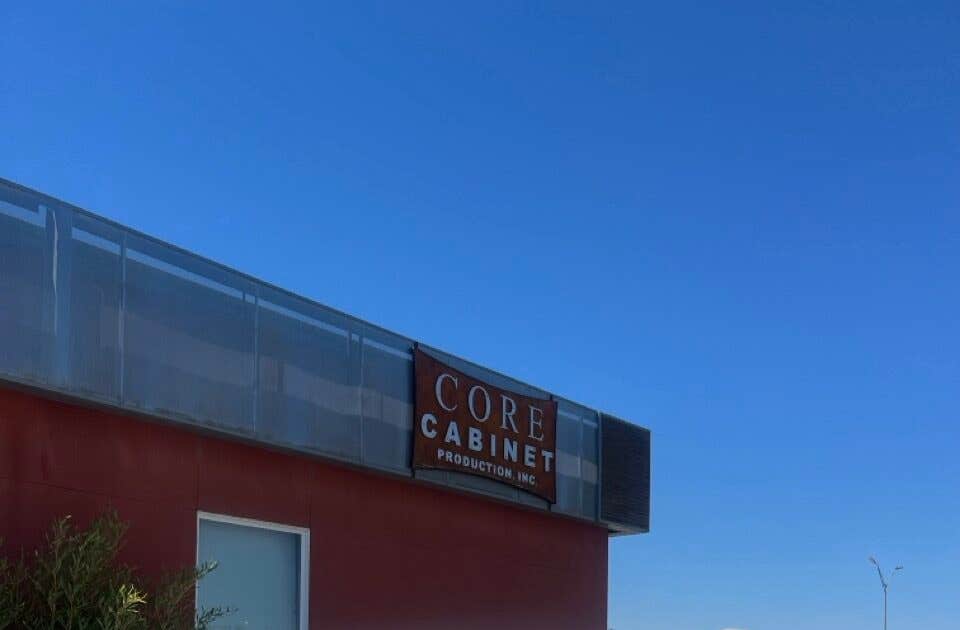Finding the sweet spot
Outsourcing can help a shop continue to grow and serve its customer base, even in these challenging times.
In August, the unemployment rate in the U.S. was 5.2 percent, or 8.4 million. In a seeming contradiction, the number of job openings at the end of July was 10.9 million.
John Delaney, the former mayor of Jacksonville, Fla., is quoted as saying that “the United States faces structural employment problems because of the long-term effects of globalization and technology.” Structural unemployment is an economics term that refers to joblessness caused by fundamental shifts in the national economy that are usually exacerbated by outside causes. It occurs when workers lack the requisite skills to do the new and different jobs that are required by a changing workplace. So, even though there are open jobs, they can’t be filled quickly by using the current skills of the workforce.
We’re seeing this in woodworking, where skills are transferring from the workbench to the keyboard. Woodshops need a new type of hybrid employee who understands wood, saws, coatings, robots, and computers. It’s going to take time for education and societal norms to deliver.
That makes employment a major issue for woodshops that are trying to grow. In most of the country, demand is still strong for casework and furniture. Supply is the problem, both in terms of shops receiving shipments of sheet stock, hardware and lumber, and in a broader sense, employees, as all of these affect the shop’s ability to meet deadlines.
On the other side of the coin, there’s a very powerful impetus in woodworking to be creative. Designing projects that mesh a shop’s abilities with a customer’s desires can be very rewarding. Turning boards and drawer slides into casework can be a highly creative and rewarding endeavor. But sometimes the shop’s physical abilities are limited. Building custom components in-house is either too expensive or technically challenging for the existing machinery and skills. And new equipment or training costs money.
These two influences – the realities of operating a business in an environment where both labor and materials are subject to supply chain glitches, and the inherent need to continually create something new – are not stopping progress, but they do represent a couple of rapids in the river. There’s a way to navigate around both. Woodshops can meld in-house production with outsourcing by finding a stable balance that serves both the shop’s interests and the best interests of its customers. There’s a place where it just makes sense to buy components so that the shop can continue to grow and serve its customer base, even in these challenging times. Finding that sweet spot takes a little searching.
That begins by evaluating the woodshop’s current production capacity. This is true whether it’s a small shop using traditional machinery, or a larger shop with established CNC capabilities. And many shops are reaching this crossroads in the current market. To expand and grow, do they add more machines or upgrade existing equipment in hopes they can hire personnel to run it, or do they decide to level off where they are and settle for current production, and profitability?
The many advantages
Here’s what outsourcing cabinet and furniture components can offer. The most obvious upside is that it potentially increases the number of jobs flowing through the shop without adding employees or upgrading equipment. That means the shop can handle more work without borrowing.
Outsourcing lets a shop offer its clients a much wider choice when it comes to aspects of design such as door profiles, coatings, species, foil colors, moldings, slides, and other hardware. It can also introduce tiered quality, which is something that is generally restricted to larger shops that can afford to keep a huge inventory. Tiered quality means that a shop can offer different price points based on materials and construction techniques. For example, a cabinet can be offered with either 1/2” MDF, 5/8” plywood or 3/4” multi-ply sides. Drawer bottoms might be different materials and thicknesses, and hardware, especially slides, can vary greatly in quality depending on how much the customer is willing to pay. Most shops already offer a few of these options but buying from a large factory means that such choices can become systemic: they reach into every aspect of construction from the species grade to the number of glue blocks. So, rather than having a conversation with a client about cutting corners in a custom kitchen to make it a little more affordable, the woodshop’s salesperson can work from a basic line of cabinets upward to a better grade of product and then spend time pointing out advantages as the job approaches the customer’s budget limits. That means the conversation is about what can be, rather than what can’t.
The net result of such positive input is that a customer feels they are getting the most for their money without compromising, as indeed they truly are. It’s a win-win scenario for the shop and the homeowner.
Outsourcing lets a shop prepare for future industry trends by establishing a relationship with one or a small group of suppliers and create a catalog for orders that can be easily fulfilled. Reliability and predictability are watchwords for cabinet and furniture component suppliers. It’s the core of what they offer.
Buying in cabinet and furniture components can significantly reduce a woodshop’s inventory cost. That doesn’t just apply to physical inventory (sheets of plywood or gallons of lacquer) but also to the cost of short-term borrowing, storage space, and manpower to move and stack inventory. By not storing and cutting sheet stock and solids wood in-house, the shop also significantly reduces the encumbent waste that is generated. That is, there’s less sawdust to dispose of and fewer environmental issues with finishing. Depending on how business is being done, reducing inventory might also mean that the shop can sell the forklift and shelving, and stop renting extra storage space, which can be significant if it’s heated space. There will be fewer leftover materials from jobs where the woodworker had to buy minimums or use partial sheets, and there will probably be lower shipping costs if less raw material is being purchased.
Outsourcing often lets a cabinet shop order kitchen or other casework and have delivered as a flat pack to the jobsite, where it is ready to assemble.
Outsourcing allows a woodshop to offer the supplier’s warranties, but this can be a double-edged sword. Components that are purchased imply that the factory will stand by them and offer support in the case of defective materials or workmanship. However, even though the shop will probably be covered in dollar terms, any defects discovered by the client will reflect poorly on the woodshop. So, it’s incumbent on the cabinetmaker to check all purchased parts and intercede before they arrive at the jobsite if something needs to be repaired or replaced.
New ideas
TaylorCraft presents the IE13, a cabinet door with a triple step inside edge. The company says that the new look is the perfect addition to modern, transitional, and Southwestern cabinet designs. The IE13 is available on both 2-3/8” and 3-1/8” frame, cope and stick cabinet doors.
In mid-September, Conestoga Wood Specialties introduced an 8’ MDF molding program that lets woodshops offer their customers the look of high-end painted moldings without stretching their customers’ budgets. Shops can choose from 10 top-selling profiles that have a more uniform paint surface than wood with none of the worries of warping, twisting, or cracking.
Elias Woodwork is offering an economical alternative to dovetailed construction. The company has introduced a Baltic birch doweled pullout shelf that’s an extension of its existing doweled drawer family. The sides butt up to the face on the new pullout (D301), so it offers a finished look with the front face running the full width of the box for a higher quality appearance.
Keystone Wood Specialties has introduced a new knife block insert that doubles the number of knives that can be stored. This sleek, modern block saves space by providing a two-level system of storing smaller knives on top and larger knives on the bottom. It can be ordered alone or combined with a cutlery tray insert, and it’s built to a shop’s specifications. The minimum drawer height is 3-1/2” and the minimum depth is 16-3/4”. The insert can be ordered separately or with a drawer box.
Earlier this year, WalzCraft launched a new line of Continuous Bead cabinet doors featuring an applied molding that runs through the door and drawer front.
The new Decoluxe solid acrylic doors and drawer fronts from Element Designs are made from 100 percent recycled acrylic. The line features a high-gloss, reflective finish and a choice of eight colors.
While many woodshops are familiar with Excel Dowel’s pre-glued dowel pins, the company also offers kitchen island columns, furniture legs and feet, and a catalog of wood turnings and components. Excel also supplies face-glued butcherblock in 3/4” to 4” thicknesses, widths up to 40”, and lengths up to 120”. The company’s edge-glued countertops are available in 1” to 2” thicknesses in the same lengths and widths. The most requested woods are hard maple and red oak, but Excel can provide butcherblock in virtually any species.
Woodworkers often turn to Josefs Art Woodturning & Son in Hamstead, N.Y. for custom furniture legs, balusters, carved panels and columns. The shop can match an existing item using the original part as a template or work with a dimensioned sketch.
Another source for carved accents, Brown Wood Inc., offers a line of furniture and hospitality wood parts including custom carved corbels and other cabinet and furniture elements in many styles, designs, finishes, wood species and sizes. Those include traditional and contemporary furniture legs, feet, arms, aprons, bases, tabletops, knobs, drawer pulls, pedestals and more. The company can provide custom wood components to match a woodshop’s precise specifications.
Buying in unusual carved or turned custom accents is one way that outsourcing can add something special to a woodshop’s standard catalog. Offering a vast array of door styles is another, and that’s becoming easier to do all the time. Most of the large component suppliers have created CAD libraries that a woodshop can use to build stunning computer renderings of kitchens and baths that include both stock and custom casework and accents. Virtual showrooms have become even more popular over the past eighteen months as customers eschew a personal visit, or perhaps they’re relocating from a distance and want to design a remodel before they make the move. It’s just one more example of how the computer and woodworking worlds are melding, and the skills required are changing.
This article was originally published in the November 2021 issue.







